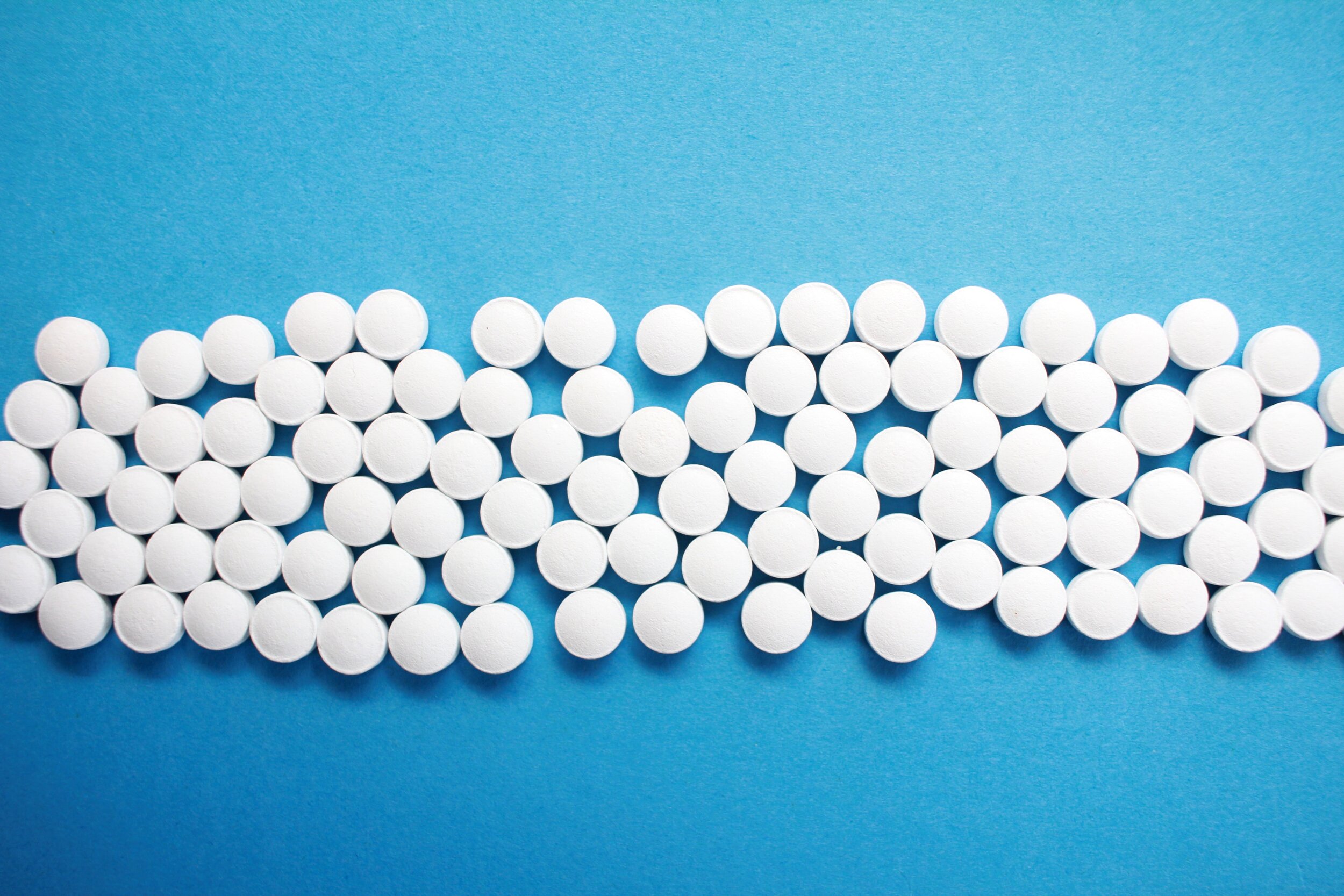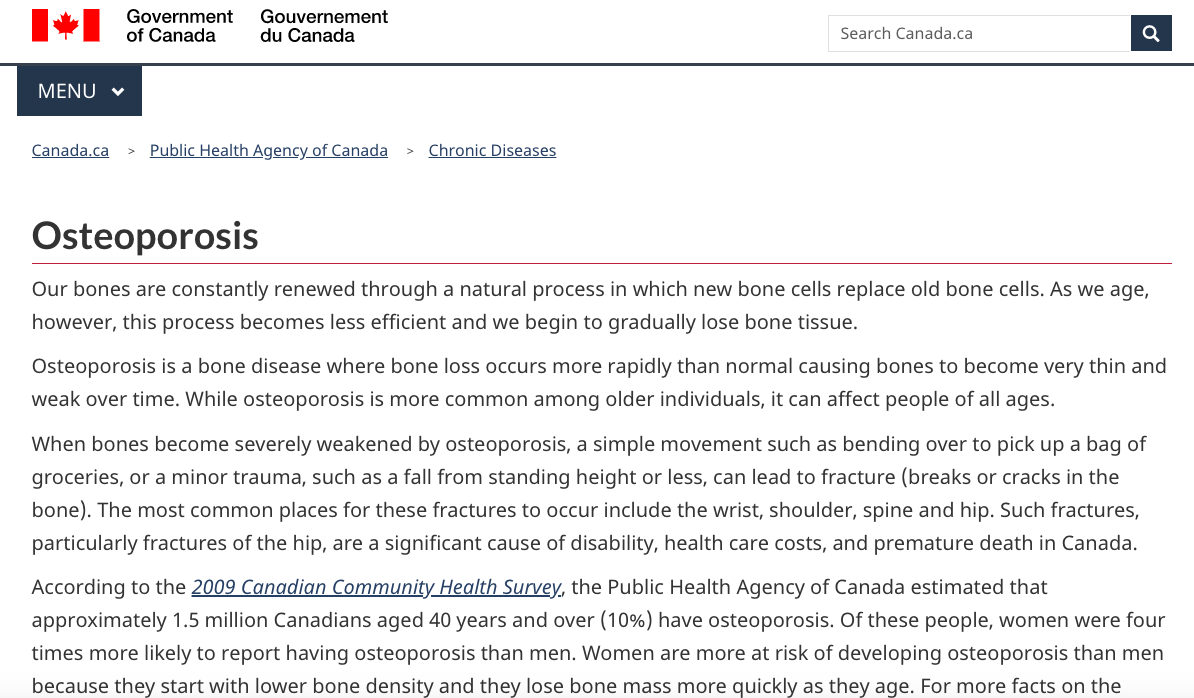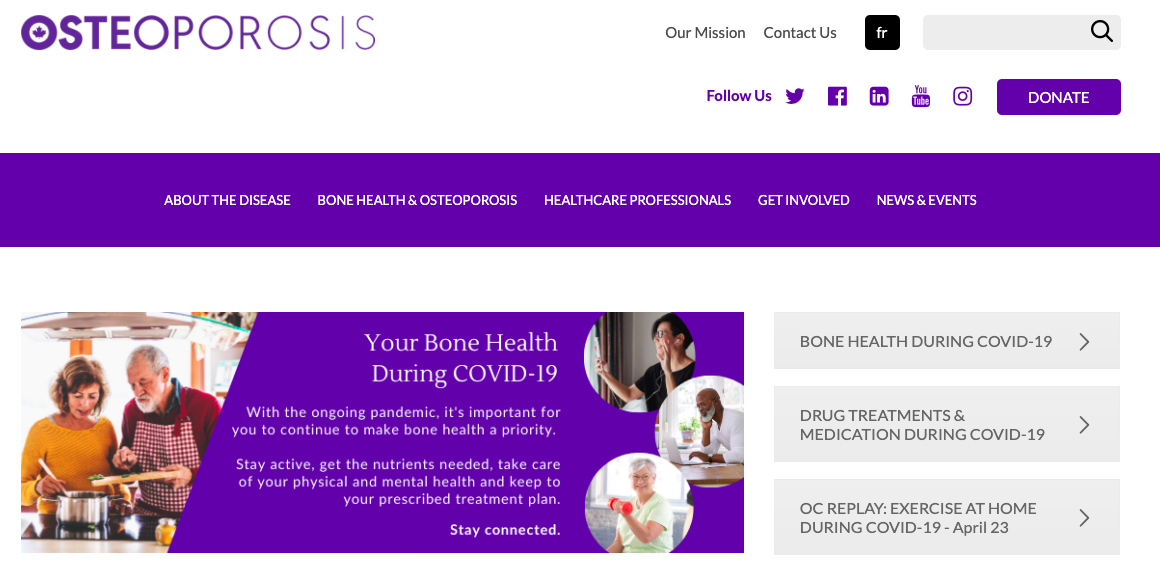Updated August 27, 2021
WHAT QUESTIONS SHOULD I AND MY FAMILY BE ASKING?
Do I get enough vitamin D and calcium in my diet?
Am I getting thirty minutes of exercise per day?
Have I broken a bone more easily than I thought I should have?
Have I broken a bone falling from standing height or less?
Am I smoking, drinking too much alcohol, or taking steroids for over three months?
Do I have risk factors like rheumatoid arthritis, smoking, or inflammatory bowel disease?
Am I in a safe space to avoid falls at home, work, or outside?
What actions can i take for this agenda?
Have 1200 mg of calcium per day from all food sources. If not, consider taking calcium supplements but talk to your doctor first
Have 1000 international units of vitamin D per day as a supplement. Studies have not shown benefit in those taking more than 2000 a day and in fact might cause harm
If you are a woman above the age of 65, you need to have your bone health assessed by a doctor
If you are a man above the age of 65 with at least one risk factor mentioned earlier, you need to have your bone health assessed too
Do thirty minutes of exercise each day with resistance training if possible
Stop smoking and reduce alcohol intake
If you have osteoarthritis, consider physical therapy first before using medications
Preventing falls is complex but can reduce your risk of getting a bone fracture. Refer to our “falling” agenda for more details
What does having healthy bones mean?
Bone health is how well your bones can support you in the activities you are doing every day
This means that when you are doing normal every day tasks, your bones will not break or bend
Bone health depends on many factors
You do not have to lose your bone health as you age
When you do not have healthy bones, this may be because your bones are thin. They will not be able to resist normal pressures to prevent breaking
“Osteoporosis” is a bone disease more common in older adults making their bones easier to break
What is osteo-porosis?
Osteoporosis is a condition that people have when their bones are weak
If so, the bones can easily break (fracture)
That can happen by tripping, picking up something heavy, or any mild impact where someone with healthy bones would not have a break from
These kinds of easy breaks are called “fragility fractures”
Common bones that break easily if you have osteoporosis are the hip, spine bones, and leg bones
Sometimes, osteoporosis is only found by doctors after a person had already broken their bone
This is why it is important to prevent it before the break happens
Other times, it is diagnosed through something called a “Bone Mineral Density" (BMD) scan
It is a unique type of x-ray to look at the thickness of your bones
A common bone disease in older adults is called “Osteoporosis”
it can cause bones to break easily
preventing this is important by keeping your bones healthy
Why is not having healthy bones a burden?
Having unhealthy bones or osteoporosis can increase your risk of breaking your bones
As we age, bones do not heal as easily as before
When hips break, it becomes very hard to move around and do tasks for yourself from the pain
A broken hip is very serious and can lead to many poor health outcomes
Usually, surgery is needed to fix the break
What can make my bones less healthy?
Some people have risks for getting unhealthy bones
These risk factors are things that increase their chances of having osteoporosis and so increase their risk of easily broken bones
Some of these risks include:
If you have used steroids in high doses over time
If you have had easy fractures in the past that your doctor may have called “fragility fractures”
Actively smoking and drinking too much alcohol
Older age
For women being postmenopausal is a risk because lower estrogen makes bones thinner
Diseases and conditions can also make you more at risk for having unhealthy bones, for example:
Rheumatoid arthritis
Inflammatory bowel disease
Celiac disease
Hormone diseases such as from the thyroid gland
if you break your hip you will likely need surgery
There are many risk factors that can worsen bone health such as using steroids, smoking, alcohol, aging, and inflammatory disease
How can I keep my bones healthy?
Studies have shown that staying physically active helps bones stay healthy
At least 30 minutes of physical activity per day is needed to help keep your bones healthy
Smoking and drinking alcohol are directly linked with poor bone health
Eliminate smoking and limit drinking to help your bone health
Avoid falling to keep them from being broken
Refer to our agenda “falling” for more details
How and when will my doctor look at my bone health?
If you are a woman over the age of 65, your bone health should be checked at least once
Your doctor can order a test called a “DXA scan” to check for your bone mineral density (BMD)
The DXA scan is a special type of x-ray that measures the thickness and strength of your bone
Results can be either normal, osteopenic, or osteoporosis
"Osteopenic" means your bones are not normal but not bad enough to be called osteoporosis
If you are a male, your BMD will be looked at when you are above 65 if you have risk factors
the best ways to keep your bones healthy is to exercise, stop smoking and alcohol, treat inflammatory diseases, and avoid falling
All women above 65 should get their bone health checked
all men above 65 need to as well if they have risk factors
Is there a cure or treatment for unhealthy bones?
If you have normal bones or osteopenia then reducing the risks mentioned above is the key treatment
You still need to make sure you are getting enough Calcium in your diet. You may also need to take Vitamin D supplements
If you have osteoporosis, there are treatments to reduce your risk of bone breaks (fractures)
One of the most common classes of medicine is called Bisphosphonates. Examples are Alendronate (Fosamax) and Risedronate (Altevia)
Another drug used but not in that class is called Denosumab (Prolia). This medication is ok for those who have poor kidney function too
There are other classes of medications that can be used not discussed here
Do these medicines have any side effects?
Bisphosphonates can increase the risk for nausea, heartburn, and irritation of the esophagus (the tube connecting the mouth to the stomach)
Rarely but seriously can decrease blood flow to a specific part of the jaw. That is why it is important to have any dental or jaw procedures before you start taking them
It is important to take Bisphosphonates the correct way. That is with a lot of water, sitting upright, with meals, and not before bedtime
Denosumab can increase the risk of having low calcium levels, weakness, constipation, increased fluids in your legs, and anemia (low hemoglobin)
Always talk to your doctor before starting any of these medications to see if they are right for you
Getting enough calcium in your diet and taking vitamin d might be necessary for you
what is osteo-arthritis?
Osteoarthritis is the mechanical injury to joints from wearing them down
This is the most common type of joint disease in older adults
A joint is a space between bones
Examples are your knee and shoulder joints
This causes loss of joint space between the bones
When the bones rub against each other with not much joint space, it causes pain
Common sites affected are the shoulders, hips, knees, and hands
Your doctor may get an x-ray to look at the joint. Usually, those joints do not have swelling and redness
This is different than other joint diseases like rheumatoid arthritis
Rheumatoid arthritis is caused by the immune system attacking the joints
Rheumatoid arthritis usually affects smaller joints like in the hands
if you have osteoporosis, you might need medications to help lower your risk of bones breaking such as bisphosphonates
What treatments are there for osteo-arthritis?
Always talk to your doctor before treating osteoarthritis or taking medications
Physical therapy has been shown to help with joint pain. There are a number of exercises one can do to help specifically for affected joints
Topical (locally applied) medications directly on joints can be helpful. There are many types but a common gel applied is called Diclofenac
They are preferred over other swallowed medications because you get fewer side effects
Tylenol is usually a safe and well-tolerated medication in older adults. It is very commonly used for osteoarthritis and has good results. It is usually the first medication tried before moving onto others
Opioids such as Morphine are only used if other medications do not work. Even then, they should be taken with caution as older adults are sensitive to these medications. They commonly cause constipation among other more serious side effects such as confusion, falls, and breathing problems
NSAIDs such as Ibuprofen and Naproxen must be used with caution especially in older adults. They are generally not recommended in older adults especially if taken over a long period of time. They increase the risk of stomach ulcers, high blood pressure, and kidney injury
Steroid injections to the joint with osteoarthritis can be helpful but it depends on the patient. It is only used if other medications have not been too helpful and last for about three months
Surgery to the joints is the last resort and option if medications fail
Talk to your doctor about treatments first to see what is right for you
Osteoarthritis is caused by mechanical wear and tear of joints
there are many treatments for it but good ones to start with are physical therapy and topical medications
What resources can help with this agenda?
healthinaging.org
Information and advice on health and aging, created by the American Geriatrics Society’s Health in Aging Foundation.
canada.ca
Canada.ca is the Government of Canada's digital presence. Provides services and Canadian guidelines for the general public.
osteoporosis.ca
Osteoporosis Canada is an organization that works to educate, empower and support individuals and communities in the risk-reduction and treatment of osteoporosis.
References
Robert L Kane et al. Essentials of Clinical Geriatrics 8th edition (2018)
Jeffrey B. Halter et al. Hazzard's Geriatric Medicine and Gerontology 7th edition (2016)
Jayna Holroyd-Leduc et al. Evidence Based Geriatric Medicine (2012)
Cosman F, de Beur SJ, LeBoff MS, et al. Clinician's Guide to Prevention and Treatment of Osteoporosis. Osteoporos Int 2014; 25:2359
Siris ES, Adler R, Bilezikian J, et al. The clinical diagnosis of osteoporosis: a position statement from the National Bone Health Alliance Working Group. Osteoporos Int 2014; 25:1439.
Johnell O, Kanis JA. An estimate of the worldwide prevalence and disability associated with osteoporotic fractures. Osteoporos Int 2006; 17:1726
Cranney A, Jamal SA, Tsang JF, et al. Low bone mineral density and fracture burden in postmenopausal women. CMAJ 2007; 177:575.
Siris ES, Miller PD, Barrett-Connor E, et al. Identification and fracture outcomes of undiagnosed low bone mineral density in postmenopausal women: results from the National Osteoporosis Risk Assessment. JAMA 2001; 286:2815.
Lorentzon M, Mellström D, Haug E, Ohlsson C. Smoking is associated with lower bone mineral density and reduced cortical thickness in young men. J Clin Endocrinol Metab 2007; 92:497.
Kanis JA, Johnell O, Oden A, et al. Smoking and fracture risk: a meta-analysis. Osteoporos Int 2005; 16:155.
Kanis JA, Johansson H, Johnell O, et al. Alcohol intake as a risk factor for fracture. Osteoporos Int 2005; 16:737.
Warming L, Hassager C, Christiansen C. Changes in bone mineral density with age in men and women: a longitudinal study. Osteoporos Int 2002; 13:105.
Institute of Medicine. Report at a Glance, Report Brief: Dietary reference intakes for calcium and vitamin D, released 11/30/2010. http://www.iom.edu/Reports/2010/Dietary-Reference-Intakes-for-Calcium-and-Vitamin-D/Report-Brief.aspx (Accessed on December 01, 2010).
Wolff I, van Croonenborg JJ, Kemper HC, et al. The effect of exercise training programs on bone mass: a meta-analysis of published controlled trials in pre- and postmenopausal women. Osteoporos Int 1999; 9:1.
Kelley GA, Kelley KS, Tran ZV. Exercise and bone mineral density in men: a meta-analysis. J Appl Physiol (1985) 2000; 88:1730.
Toward Optimized Practice. (2016). Diagnosis and management of osteoporosis. Retrieved from https://www.topalbertadoctors.org/download/1907/Osteoporosis%20CPG.pdf
Cadarette SM, Jaglal SB, Murray TM, et al. Evaluation of decision rules for referring women for bone densitometry by dual-energy x-ray absorptiometry. JAMA 2001; 286:57.
Marques A, Ferreira RJ, Santos E, et al. The accuracy of osteoporotic fracture risk prediction tools: a systematic review and meta-analysis. Ann Rheum Dis 2015; 74:1958.
Shepstone L, Lenaghan E, Cooper C, et al. Screening in the community to reduce fractures in older women (SCOOP): a randomised controlled trial. Lancet 2018; 391:741.
Cummings SR, Black D. Bone mass measurements and risk of fracture in Caucasian women: a review of findings from prospective studies. Am J Med 1995; 98:24S.
Melton LJ 3rd, Atkinson EJ, O'Fallon WM, et al. Long-term fracture prediction by bone mineral assessed at different skeletal sites. J Bone Miner Res 1993; 8:1227.
Consensus development conference: diagnosis, prophylaxis, and treatment of osteoporosis. Am J Med 1993; 94:646.
Papaioannou A, Morin S, Cheung AM, et al. 2010 clinical practice guidelines for the diagnosis and management of osteoporosis in Canada: summary. CMAJ 2010; 182:1864.
Ravn P, Bidstrup M, Wasnich RD, et al. Alendronate and estrogen-progestin in the long-term prevention of bone loss: four-year results from the early postmenopausal intervention cohort study. A randomized, controlled trial. Ann Intern Med 1999; 131:935.
Reid IR, Horne AM, Mihov B, et al. Fracture Prevention with Zoledronate in Older Women with Osteopenia. N Engl J Med 2018; 379:2407.
Ettinger B, Black DM, Mitlak BH, et al. Reduction of vertebral fracture risk in postmenopausal women with osteoporosis treated with raloxifene: results from a 3-year randomized clinical trial. Multiple Outcomes of Raloxifene Evaluation (MORE) Investigators. JAMA 1999; 282:637.










